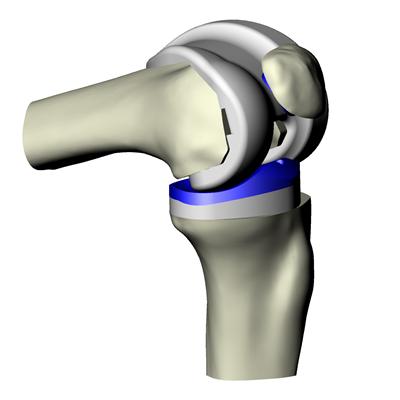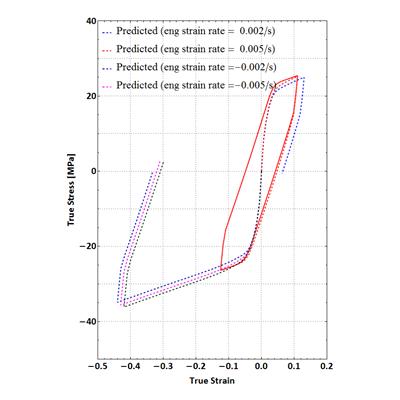Research project: How to design better artificial knee joints
Physics-based modelling of wear of polymers for orthopaedic applications
Physics-based modelling of wear of polymers for orthopaedic applications
Wear of Ultra High Molecular Weight Polyethylene (UHMWPE) is the main factor influencing the longevity of total joint replacement (TJR) and more particularly that of total knee replacement (TKR). Because of change in the diversity of patient demographics (younger and more active patients) and an increase of life expectancy, TKR UHMWPE components are required to last longer which means a reduced wear rate.

Currently, wear of TKR designs is assessed through experimental tests, but these are expensive, time consuming and as a consequence are only able to assess a limited range of activities. Recently, fast computational tools (rigid body dynamics and finite element simulations) have been developed to simulate wear at the macroscopic scale and the initial results look promising. These tools provide greater flexibility and allow a more rigorous analysis of the wear potential for new implant designs. However, the wear models used in these computational studies are relatively crude, based around empirical wear algorithms, generally derived from Archard's law of wear, which do not adequately capture the physics of the wear mechanisms and do not generalise to arbitrary loading conditions.

The aim of this research is to gain a better understanding of the physics of wear of UHMWPE during simulated in-vivo operating conditions so that predictive computational mechanistic model can be developed (implementation in a finite element software environment). The mechanistic models under development will account for the complex behaviour of UHMWPE via appropriate constitutive relations (e.g. finite strain cyclic viscoplasticity) and will integrate at the macroscopic scale wear mechanisms occurring at the nano- and micro-scale. Pin-on-disc wear experiments of UHMWPE samples (together with knee wear machine tests) are used to guide the development of the mechanistic wear model of UHMWPE whilst providing a basis for the validation of its predictive capabilities.
Bioengineering and human factors